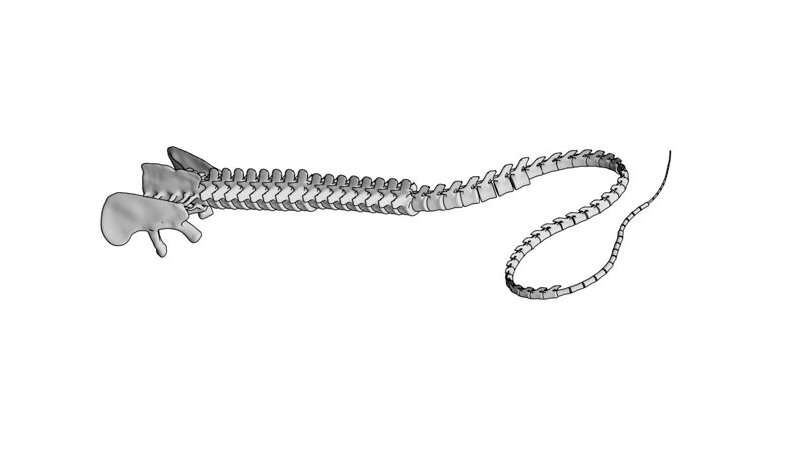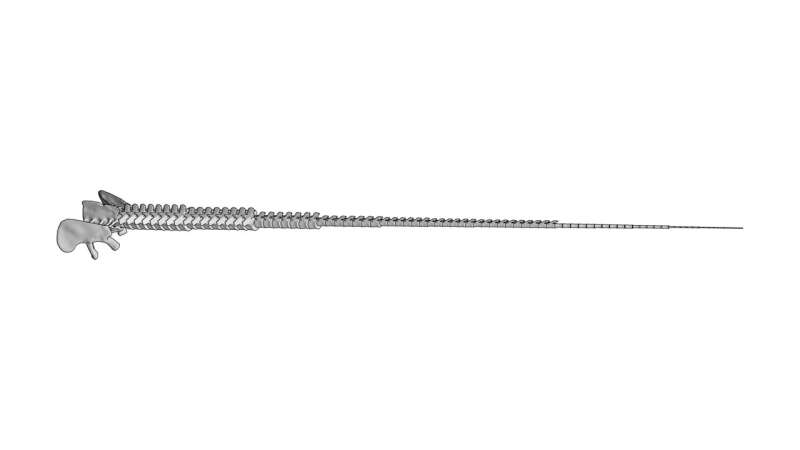Paleontology: No supersonic boom for dinosaur tails

Diplodocids—large herbivorous dinosaurs with long necks and tails—may have been able to move their tails like bullwhips at speeds of up to 33 meters per second (more than 100 kilometers per hour), according to a modeling study published in Scientific Reports. However, these findings contradict those of a previous study, which proposed that a hypothetical structure attached to the end of a diplodocid tail—similar to a tuft at the end of a bullwhip—could move faster than the speed of sound (340 meters per second) and create a small supersonic boom.
Simone Conti and colleagues simulated diplodocid tail movements using a model based on five fossilized diplodocid specimens. The model tail is over 12 meters long, weighs 1,446 kilograms and consists of 82 cylinders—representing vertebrae—attached to an unmovable hip bone base. When the tail base moves in an arc, it generates a whip-like movement with a maximum speed of 33 meters per second—more than ten times slower than the speed of sound in standard air and too slow to create a supersonic boom.
The authors tested whether their model tail would be able to withstand the stress of moving fast enough to create a supersonic boom. They found that the thin whip-like tail could not move at a maximum speed of 340 meters per second without breaking. The authors then assessed whether adding three different one meter-long hypothetical structures—mimicking the end of a bullwhip—to the end of the model tail could allow it to travel at the speed of sound without rupturing.

The first structure consisted of three segments made of skin and keratin, the second consisted of braided keratin filaments, and the third had a flail-like structure composed of soft tissues. None of the structures was able to withstand the stress of moving at 340 meters per second without the tail breaking.
Together, the findings suggest that diplodocid tails may not have been able to move fast enough to create a small supersonic boom. However, the authors speculate that diplodocids may have still been able to move their tails fast enough to use them as defensive weapons or for combat with other diplodocids.
More information: Simone Conti, Multibody analysis and soft tissue strength refute supersonic dinosaur tail, Scientific Reports (2022). DOI: 10.1038/s41598-022-21633-2. www.nature.com/articles/s41598-022-21633-2
Journal information: Scientific Reports
Provided by Nature Publishing Group




















